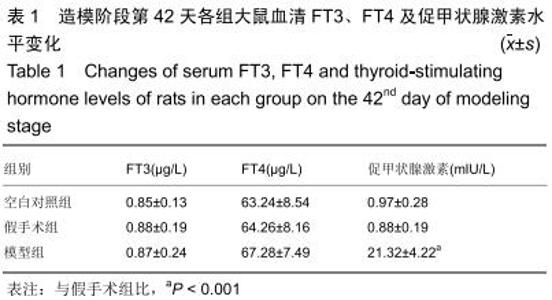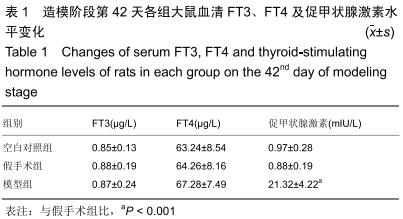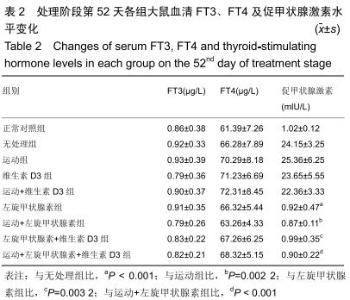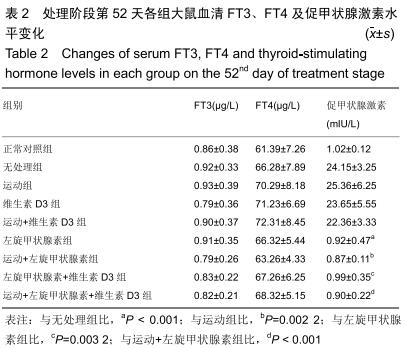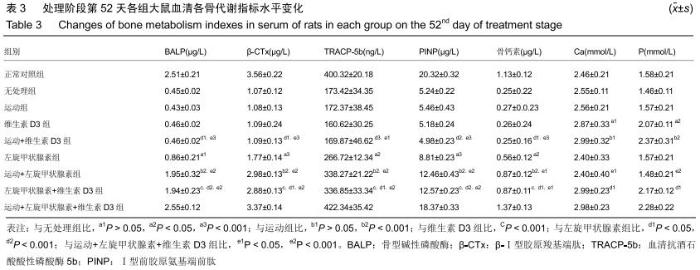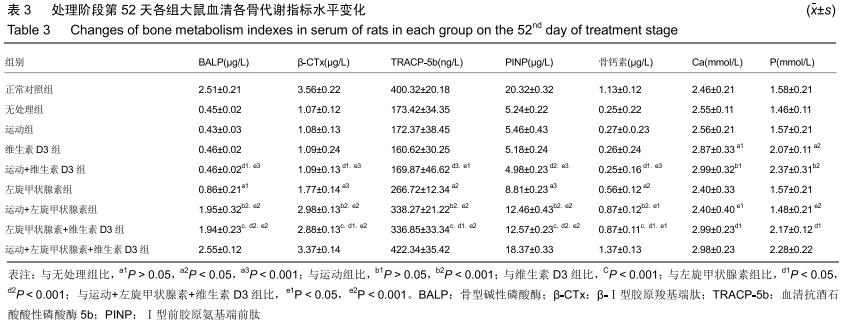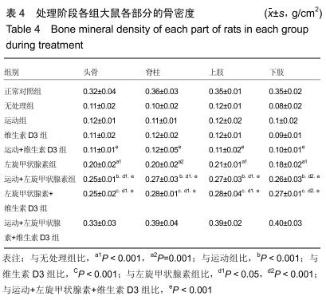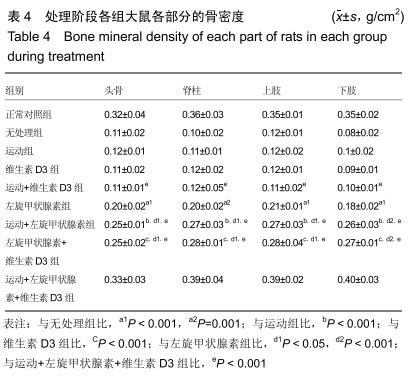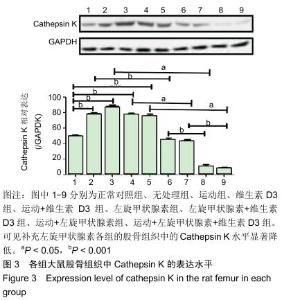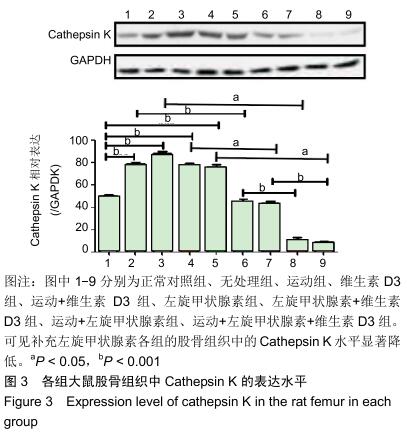|
[1] BAUMGARTNER C, BLUM MR, RODONDI N. Subclinical hypothyroidism:Summary of evidence in 2014. Swiss Med Wkly. 2014; 144:w14058.
[2] HAK AE, POLS HA, VISSER TJ, et al. Subclinical hypothyroidism is an independent risk factor for atherosclerosis and myocardial infarction in elderly women: The rotterdam study. Ann Intern Med. 2000;132(4): 270-278.
[3] CHEN B, WANG L, LI L, et al. Fructus ligustri lucidi in osteoporosis: A review of its pharmacology, phytochemistry, pharmacokinetics and safety. Molecules.2017;22(9):E1469.
[4] ERCOLANO MA, DRNOVSEK ML, SILVA CROOME MC, et al. Negative correlation between bone mineral density and tsh receptor antibodies in long-term euthyroid postmenopausal women with treated graves' disease. Thyroid Res. 2013;6(1):11.
[5] 秦利平. 正常范围内血清促甲状腺激素水平对骨密度影响的研究[D].兰州:兰州大学,2018.
[6] ABE E, MARIANS RC, YU W, et al. Tsh is a negative regulator of skeletal remodeling. Cell. 2003;115(2):151-162.
[7] SVARE A, NILSEN TI, BJORO T, et al. Hyperthyroid levels of TSH correlate with low bone mineral density: The hunt 2 study. Eur J Endocrinol.2009;161(5):779-786.
[8] ENDO T, KOBAYASHI T. Excess TSH causes abnormal skeletal development in young mice with hypothyroidis via suppressive effects on the growth plate.Am J Physiol Endocrinol Metab.2013;305(5): 660-666.
[9] 俞云峰,龚震文,王善明.骨质疏松性骨折相关危险因素的临床研究[J].全科医学临床与教育,2019,17(7): 637-638.
[10] 郭梁.运动对绝经后妇女骨密度影响的研究进展[J].中国骨质疏松杂志, 2018,24(3):380-384.
[11] 马江涛,柴爽,万雷,等.维生素D缺乏对骨和骨外作用研究进展[J/OL].中国骨质疏松杂志: 1-10[2019-11-13]. http://kns.cnki.net/kcms/detail/11.3701.R.20190513.1519.004.html.
[12] 王丹,姜春燕.维生素D受体基因FokⅠ多态性对骨化三醇治疗骨质疏松症的影响[J].北京医学,2019,41(7):598-600.
[13] 黄婧.亚临床甲减大鼠骨代谢改变及左旋甲状腺素疗效观察[D].兰州:甘肃中医药大学(原名:甘肃中医学院),2015.
[14] 李美,孙丰雷.亚临床甲减的研究进展[J].世界最新医学信息文摘,2019, 19(43):136+138.
[15] 杨劲松.实验动物的福利伦理与“3R”原则[J].河南医学研究,2015,24(8): 64-65.
[16] 杨瑞霞. 温肾方对亚临床甲状腺功能减退模型大鼠心肌组织结构的影响[A]//中华医学会、中华医学会内分泌学分会.中华医学会第十一次全国内分泌学学术会议论文汇编[C].中华医学会、中华医学会内分泌学分会:中华医学会,2012:1.
[17] 秦晓伟,徐新娟,韩璐,等.维生素D3对自发性高血压大鼠靶器官炎症的影响[J].中国实验动物学报,2013,21(5):1-4+95.
[18] 刘蓉,商宇红.在有氧运动的基础上服用补肾壮骨颗粒对改善去势大鼠骨质疏松症病情的协同效果[J].中国骨质疏松杂志, 2017,23(6):734-739.
[19] 房美玉,郑澜,周建社,等.有氧运动与针刺穴位对中老年大鼠腹部脂肪及体重、腰围、Lee’s指数影响的研究[J].沈阳体育学院学报,2004,23(3):314.
[20] 李云.骨组织切片染色方法的改良[J].咸宁医学院学报,1999,13(3): 162-163.
[21] 张贵萍.温补脾肾法联合左甲状腺素对亚临床甲减患者甲状腺功能及血脂水平的影响[J].现代中西医结合杂志, 2017,26(12):1336-1338.
[22] 梁利波,王佑娟,张玫,等. 亚临床甲状腺功能减退症与骨密度及骨代谢指标的相关性研究[J].四川大学学报(医学版), 2014,45(1):66-69.
[23] 薛秀娟.左旋甲状腺素治疗亚临床甲减患者的疗效观察[J].中国现代药物应用,2018,12(8):117-118.
[24] DANG M, SAUNDERS L, NIU X, et al. Biomimetic delivery of signals for bone tissue engineering.Bone Res.2018;6:25.
[25] CASE N, THOMAS J, XIE Z, et al. Mechanical input restrains PPARgamma2expression and action to preserve mesenchymal stem cell multipotentiality.Bone.2013;52(1):454-464.
[26] YU C, HUANG D, WANG K, et al. Advanced oxidation protein products induce apoptosis,and upregulate sclerostin and RANKL expression,in osteocytic MLO-Y4 cells via JNK/p38 MAPK activation.Mol Med Rep. 2017;15(2):543-550.
[27] 刘江,徐媛.长期体育锻炼对女性骨代谢指标PINP、β-CTX和BGP的影响及意义分析[J].中国体育科技,2018,54(2):117-120.
[28] CAVALIER E, BERGMANN P, BRUYÈRE O, et al.The role of biochemical of bone turnover markers in osteoporosis and metabolic bone disease: a consensus paper of the Belgian Bone Club. Osteoporos Int. 2016;27(7):1-15
[29] 唐旭,戴丹萍,谢凯.福美加+钙尔奇D对绝经后骨质疏松患者骨密度、β-CTx、P1NP的影响[J].浙江中西医结合杂志, 2019,29(8):668-670.
[30] 刘永莹.强骨胶囊联合维生素D治疗骨质疏松性骨折临床研究[J].新中医, 2019,51(9):154-156.
[31] 刘晔,欧阳晓俊,胡健.钙剂联合活性维生素D治疗老年骨质疏松的临床疗效[J].临床合理用药杂志,2019,12(27):68-69.
[32] 王军峰,陈军,杨嘉.高剂量维生素D补充剂对骨质疏松症患者骨代谢标志物的影响[J].中华实用诊断与治疗杂志, 2018,32(7):698-700.
[33] 王东,顾建红,刘宗平.组织蛋白酶K在骨吸收中的作用研究进展[J].动物医学进展,2014,35(6):114-116.
|


